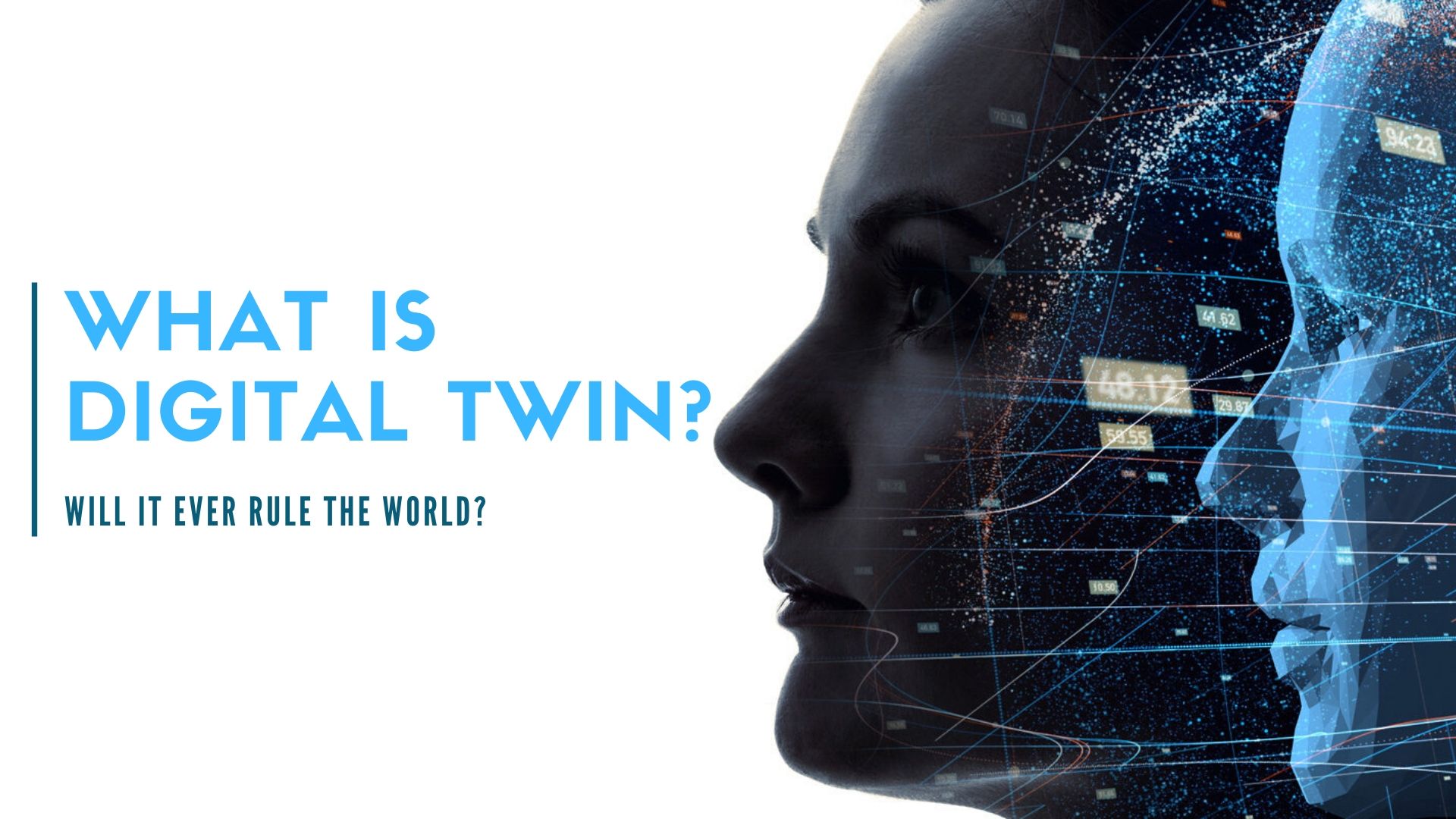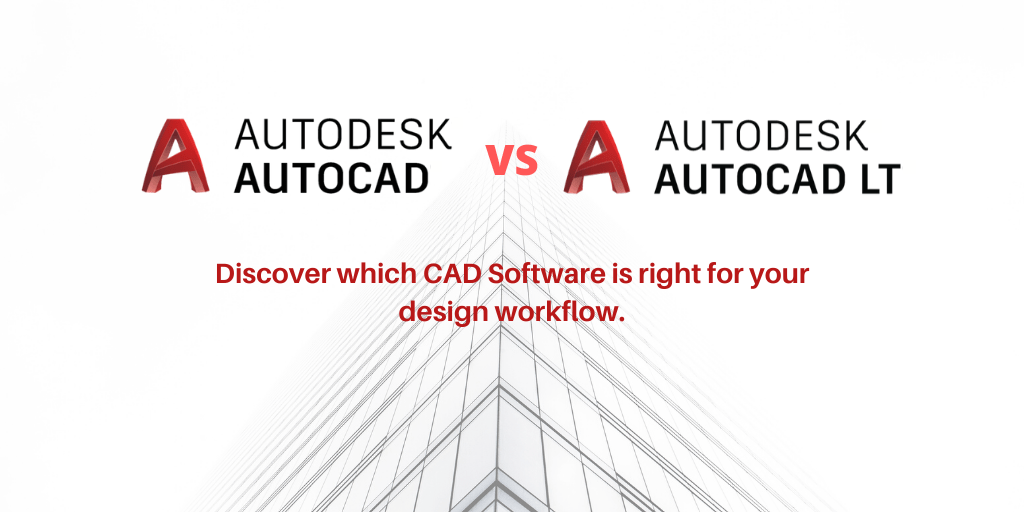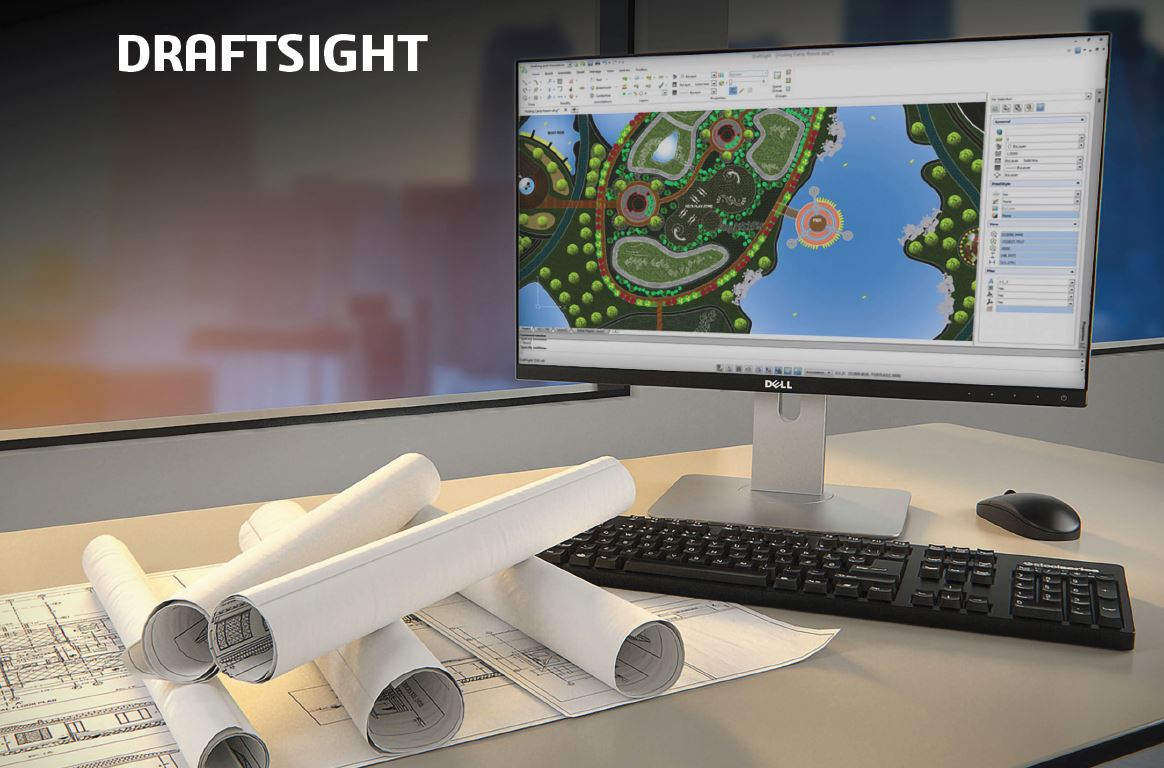
What Does 2021 Hold for India’s Aerospace, Defense, and Space Ecosystem?

What Does 2021 Hold for India’s Aerospace, Defense, and Space Ecosystem?
Looking Forward to Aero India 2021 — We Hope to See You There in Person or Virtually
India is firmly poised to become a global leader in aerospace, defense, and space innovations, continuing its growth momentum across 2021 to reach a market worth of $70 billion by the end of this decade. The recent indigenous acquisition of 83 Tejas Mark-1A Light Combat aircraft is an important milestone on this journey, emphasizing India’s self-sustaining research, development, manufacturing, and MRO capabilities, aided by emerging digital technologies. Initiatives like Make in India and #AtmaNirbhar will be instrumental in shaping the sector’s future in 2021 and beyond.
“2021 will be a year of reshaping for the aerospace and defense Industry. I see two trends emerging in 2021– Industry consolidation and Digitalization. Of these two trends, Digitalization would be the key trend to watch out for, as this would resonate with every stakeholder in the entire value chain of this industry. This certainly will be a key driver in realizing a thriving Aerospace & Defense ecosystem” commented Ravikiran Pothukuchi, Director, Dassault Systèmes. To lay the foundation for digitalization, meaningful partnerships, and pathbreaking projects like the Tejas LCA, the government has planned the Aero India Show – 2021, a summit for aerospace and defense professionals to obtain market insights and enable the national/international aviation sector to bolster business.
Dassault Systemes will be present at Aero India 2021, booth number A6.6 & A6.8, between February 3rd and 5th to discuss your most pressing issues around “digitalization to realize a thriving aerospace, defense, and space ecosystem.”
Addressing India’s Challenges and Opportunities at Aero India 2021
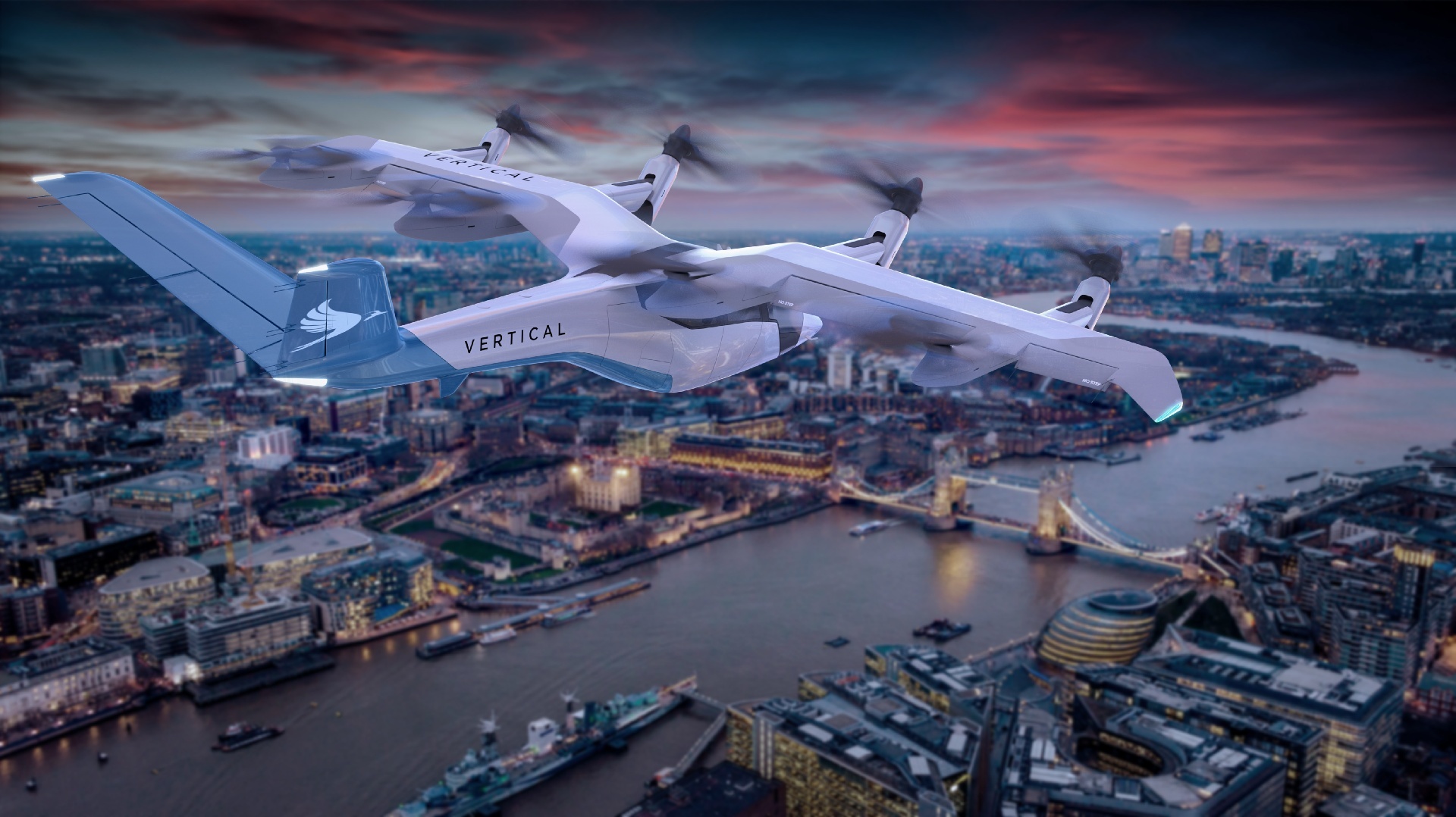
To meet and exceed India’s incredible growth potential, aerospace, defense, and space OEMs and suppliers must overcome key challenges such as increasing program complexity, zero tolerance for production delays, and faster product development cycles. There is also a stringent focus on affordability and innovation, adopting digital transformation as the industry aims for greater agility and increased performance.
Paving the way for indigenous innovations and on-time, on-target delivery in the face of these challenges, we will be presenting the following industry solution experiences at the event.
We will demonstrate these four industry solution experiences at Aero India 2021. You could also register for our virtual workshop if you are unable to attend in person.
How Do Suppliers Increase Efficiency From Bid To Delivery? – A Hybrid Workshop
Parallel to our in-person booth, our virtual workshop on February 4th, 2021 is designed for aerospace, defense, and space OEMs and suppliers facing market pressures in 2021. The number of companies competing for business is rising, alongside the demand for higher production rates and just-in-time delivery of parts and systems. As a result, supply chains must become more agile, even as companies maximize the available data, information, and industry knowledge to deliver profitable growth.
Our dedicated workshop on increasing efficiency from bid to delivery focuses on the Engineered to Fly industry solution experience – helping companies to integrate their engineering processes from the proposal phase downstream through engineering, manufacturing, and all the way to delivery.
Gaining From the Latest Insights and Expert Advice – Meet Our Experts
As India gradually develops the innovation and ecosystem necessary for end-to-end aerospace solutions, industry stakeholders must find targeted and relevant solutions to their most pressing challenges, in order to stay ahead. We have arranged for one-on-one meetings with our experts at Aero India 2021, where you can gain from several decades of industry and technology understanding as well as perspectives informed by experiences working with the world’s leading aerospace, defense, and space organizations.
We look forward to seeing you at the event, sharing ideas on the future of aerospace, and joining hands to envision India’s remarkable progress towards becoming a premier global aerospace behemoth.
IIoT Keeps Manufacturing Strong in Difficult Times

Many manufacturers are revamping the way they do business, but, the Internet of Things (IoT) and Industrial Internet of Things (IioT) are not included in this. The strength of IoT and IIoT is being able to obtain data at a distance. Now there is an even greater way to connect our information over further distances. Under the current business trends, we are trying to be more creative. This means we take the systems we used to have and now try to make them fit into our rapidly changing need for information.
Accessibility While Offsite
A year ago, many manufacturers were contemplating how they were going to weave IIoT into their fabric of information and their existing IT systems. Fast forward to today and we have adapted to virtual meetings and working from home. We used to get answers simply by walking through a plant floor or running a report in the office, but for many of us, that is still not an option. These answers need to be obtained remotely. Access is one of the biggest issues. How do we securely allow for a remote connection into the servers and determine who can gain access? This can be a difficult situation because it’s very likely that what one person feels they need to have access to, may not be what the IT department and supervisor deem necessary. They can determine who needs what and when. Can they openly access the IoT information that gets fed into reporting software or processors? Can you use firewalls that are time-locked out, much like the safes in the movies that can’t be opened until morning once they’re locked? Once you determine who is authorized and needs the information, you can look at the next phase of “How?”
How do the users need the information? I’ll use a simple example of a sensor that tracks the machine running versus not running. Once that sensor feeds the information into the accumulation device or control through a gateway, it will be populated and push the information up to the cloud where others can access it. The uptime may combine with the data for the jobs to help managers in production to determine if they will meet their demands or if they will have to run overtime. Other programs such as maintenance programs that plan for preventive care using hours of run time as a parameter need to use these registers also. The sharing of data with people and programs is a very important part of IoT.
Feedback on Information Received
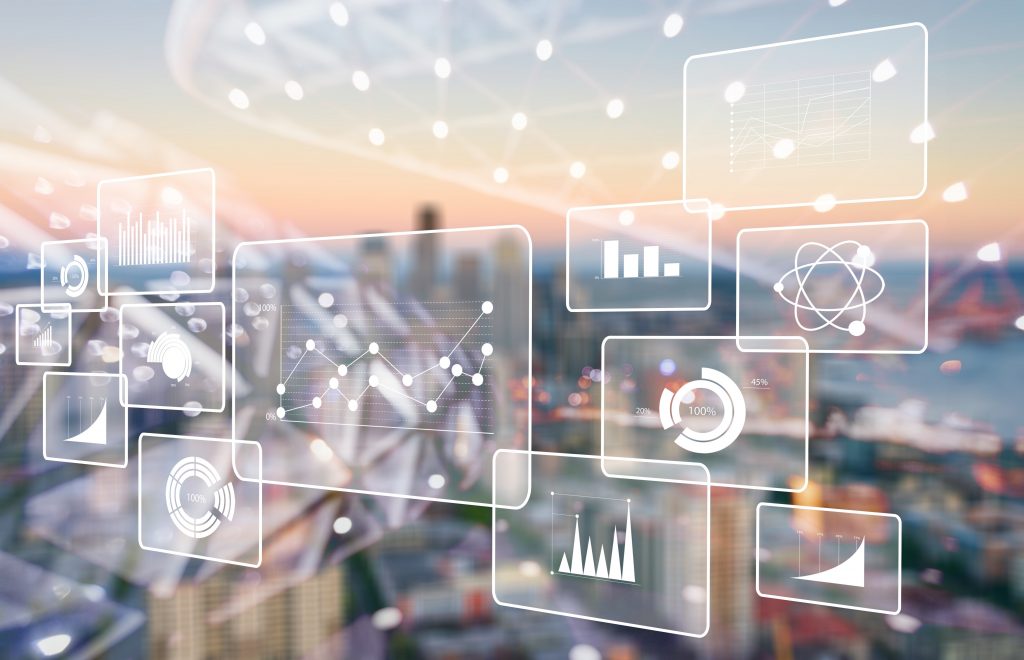
Accessibility and sharing are crucial to the value of IoT, but what else? That would be feedback. Once information is received, the data is used to adjust the parameters, often through smart sensors. Many of today’s sensors have this type of adjustability; they have a sensitivity curve that can be adjusted and calibrated, based on environment or even chemical makeup. The feedback provides better control over the accuracy of the sensor and makes it more responsive. Feedback also provides information back to smart controllers which are able to take data profiles and customize sensors to the job or application.
Everything in our future world must be dynamic and flexible to rise to the challenge with technology. In manufacturing optimization, a chain is only as strong as its weakest link. IoT is working on all phases to not be that weakest link. The future of IoT is bright indeed. Wear shades as needed!
Why Supply Chain Need a Sudden change?

The pandemic has caused a significant change in how consumers and suppliers behave. Causing supply chain businesses to rethink their supply chain management processes. Covid-19 has forced many businesses across the globe to shut down, leading to a shortage of supply.
Fewer incoming orders and delivery bottlenecks are forcing companies to optimize supply chains, increase cooperation, better analyses, greater transparency, and above all a digital transformation is necessary.
Digital Transformation
Digitization is the new trending topic everywhere and in every industry. Till 2020 digitization was a future plan for many, but the Covid-19 have proved this is not a “ nice to have ” it is a “ Must have ” transformation.
During the Covid-19 crisis, many supply chain companies are facing difficulties to cope with it. Due to their outdated systems and process. The Major advantage of Digitization is Speed and Cost.
Adopting to the next technological level enables improved visibility and provides real-time insights. Making people along the chain to control and reduce the time to make strategic decisions. Manufacturers also believe they will see increased sales from more digital processes.

Perform intelligent analysis
Exceptional circumstance needs exceptional panning to survive, businesses need to concentrate on essentials. Due to fewer incoming orders and high cancellation managers need to react fast and swiftly. Controlling suppliers, capacity management, order management, delivery management and many more.
Supply Chain is a complex process that’s why the need for digitization is so important. For quick decision support, a software that deploys intelligent algorithms is thus ideal. The software helps you collect and analyse data.

Data Analytics
Analytics brings data-driven intelligence to supply chain business, reducing the overall cost. Data Visualization techniques can be in the form of charts, graphs, and tables to help decision making.
There are different types of data analytics
- Predictive analytics: Based on the existing data the predictive analytics give you a set of trends that are likely to occur in the future.
- Descriptive Analytics: Descriptive analytics breaks down the insights gathered from any data sets and summarizes all the information gathered to understand them better.
- Prescriptive Analytics: It helps businesses make decisions based on analytical findings.
- Cognitive Analytics: Cognitive analytics tries to study data and understanding patterns and interpreting them to give conclusions.

Early Detection
The recent crisis has once again proved and highlighted the importance of early detection and fast decision-making processes. The early detection system allows you to plan and do things before anything goes wrong.
For faster decision making, category managers need automated diagnostics such as alerts on delayed receipts, insights into under-performing stores and products, transportation systems, delivery process, variations in sales performance across channels, and impact of competitor price actions on their demand.
Robotics & Automation
The Need for automation and robotics is growing all over the globe making supply chain business more efficient. Many businesses are already using robotics to do certain tasks.
Advantages
- Reduced error, re-work, and risk rates
- Improved safety for employees in high-risk work environments
- Reduced cost and time.
The automation of simple and routine processes like order tracking, data analysis, and warehouse management. Thus making End to End supply chain operations more fluid.

Conclusion
Covid-19 pandemic has big impact on every industry especially Supply chain low demand and supply makes businesses to rethink. Until 2020 technology adoption was future plan but to cope situation like this we really need a master plan, to make that master plan technology adoption is the only option.
Watch this short animation for a glimpse into the life of a DELMIA Quintiq logistics planner.
How we can achieve Digital Continuity with CATIA V5 ?
- How we can achieve Digital Continuity with CATIA V5 ?
- Do you want to foster Social Collaborative innovation in your organization by managing new ideas through communities
- Do you want to use dashboards to collect and communicate product and project information
- Do you need to access and share your CATIA V5 3D with other people without copying or translating?
- Do you have issues managing data maturity and versioning of modifications?
- Do you have problems with task management and collaboration?
- Do you want to have Instant visualization of your CATIA V5 3D data from any location, at anytime, on any device
Key Features
Search and Explore products via the web to understand product composition and impact on related items when considering change
- Search products and refine through tags
- Review in CATIA 3D Play
- Explore Attributes
- Explore Related Items
- Drag and Drop into Product Explorer
Expand, navigate, perform lifecycle operations and view in 3D on complex product structure within one application via the web
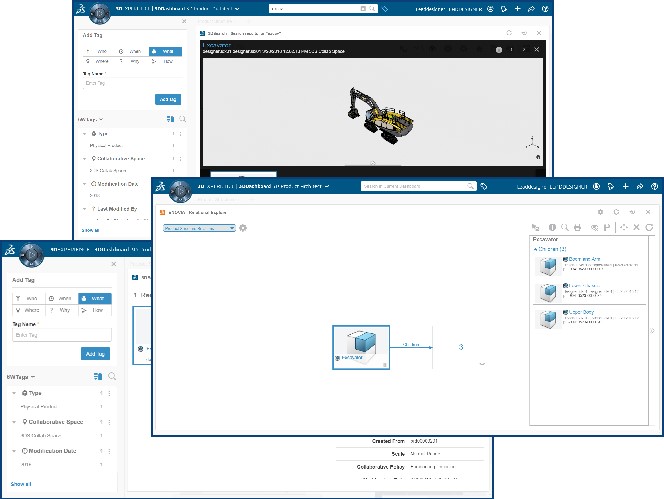
Expand, navigate, perform lifecycle operations and view in 3D on complex product structure within one application via the web
- Drag and Drop from search results
- Expand product structure
- Search in context
- Cross Highlight
- Measure & Section
- Swap visible space
- Filter structure by Attribute or Configuration

Create new revisions, duplicate structures and apply other lifecycle operations through Collaborative Lifecycle capabilities
- Revise
- Duplicate Structure
- Compare
- Change Owner
- Lock/Unlock
- Where Used
- Delete
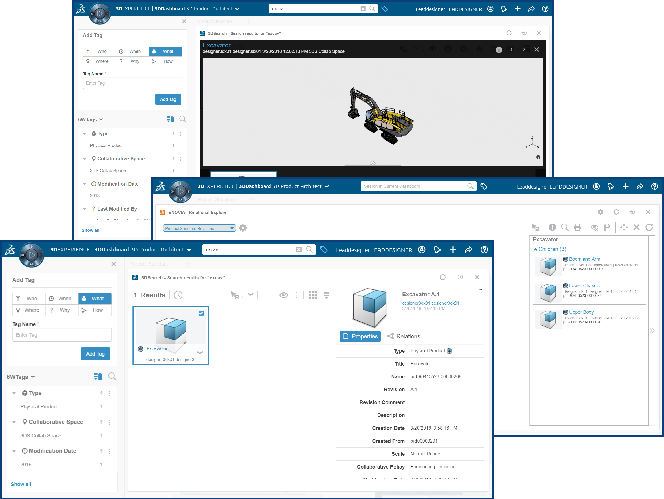
Develop 3D Markups to convey ideas for change or new product to others in the product development team
- Load and Review 3D Products
- Annotate and save markups
- Measure and save markups

Review Functional Tolerance and Annotation with team members via the web to expose potential manufacturing impacts
- Load and review product FT&A
- Select annotation sets
- Select attributes

Connect directly to design through the web for smooth and accurate transition to making modifications to products within CAD
- Load selected products by selection and load into CAD directly from web
- Partial loading supporting faster performance
- Modify and Save directly from CAD

User Benefits
Up-to-date data will increase the performance of your team
Build dashboard for any type of user with the right data available instantly
- 3D Dashboard delivers the real-time intelligence needed to monitor everything that matters to a business
Secure your data with managed lifecycle and controlled access
- Perform lifecycle operations including revision, release and lock/unlock
Find what you need in an instant with 3D Search & 6W Tags
- All data on the 3DEXPERIENCE platform is indexed
Instant visualization of 3D data can help you understand what you need
- Immersive 3D visualization in the browser
- Browse and filter Functional Tolerances and Annotations (FTA)

Leverage mobile and social applications to optimize performance
- 3D becomes a your product reference including annotations, properties, manufacturing information, etc….
- Use dashboards to collect and communicate product and project information
- Create annotations, modification or review tasks and include the data in your task
- Enjoy mobility & efficiency with no compromise on data accuracy
- Mobility, access from anywhere, anytime


Data is your company's most valuable asset Secure your data
Secure your data
- Using with managed lifecycle and controlled access
- Direct revision from CATIA V5
Collaborate in a database
- Share 3D design information with non-CAD users with lightweight, browser-based apps to ensure understanding and improve collaboration
Remove your IP before sharing
- Easily remove company know how from any CATIA model prior to data exchange

Innovation management : from the innovation project to the permanent innovation process
Manage new ideas through communities
- Ideas can be tracked with an ideation funnel and prioritized based on feedback from all stakeholders including consumers
Launch new applications on the spot
- Connect the CATIA V5 application and data with the 3DEXPERIENCE platform
Promote new projects using social collaboration
- Interact with suppliers, regulators and consumers by involving them in communities of common interest
Low cost, high flexibility, strong ROI
- Improve productivity by accessing tasks, and directly view and load design data associated to the tasks, without CATIA design

Digital Twin Technology Explained. Will it Ever Rule the World?
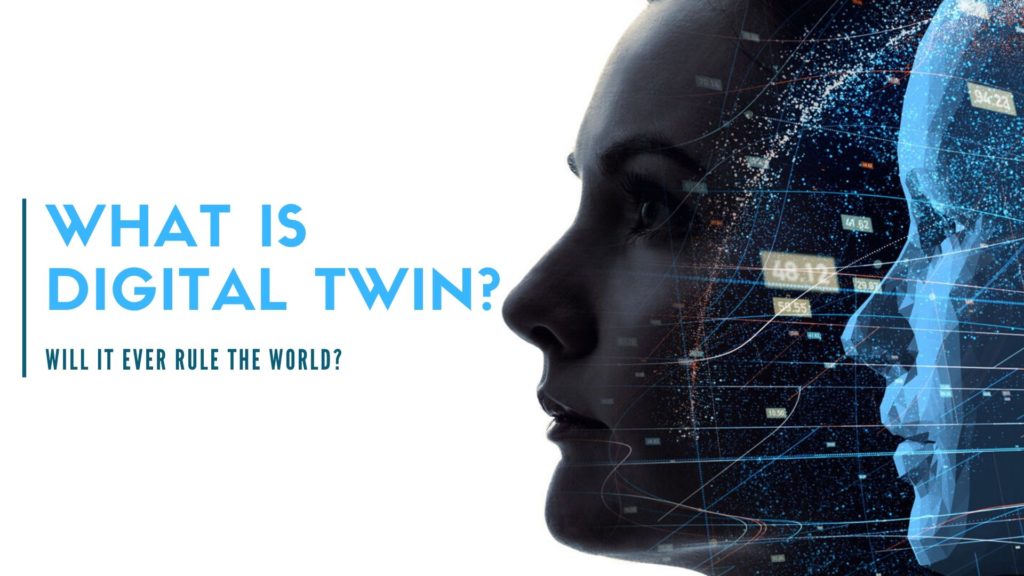
You could have probably heard of Digital Twin technology, but perhaps nobody knows what exactly Digital Twin is.
Simply, It is the process of representing a real-world object in a Virtual model. This virtual reflection allows the analysis of data and monitoring the model to predict and prevent real-world problems before they even occur. This makes us to improve, develop and plan for the future.
“Digital Twin is the place where the Digital and Physical world gets connected.”
Why Digital Twin Technology is so important?
Ultimately Digital twin is a powerful technology that drives innovation and performance. Helping companies to improve their customer experience by better understanding customer needs
For example, Digital Twin could predict when a part of your car may fail using real-world data. The car got to break down? it can tell how your car failed? what made it fail? all before you drive into a mechanic workshop.
It could also predict the performance of your car and how to improve it? when you should replace your brake pad? and how to improve the life of your tires? , and more.
Before the twins, it takes a huge amount of process to get these kinds of data. by experimenting and prototyping physical components again and again.
But still, it hasn’t achieved its full potential. We don’t need a full potential twin to get benefits. Because it’s already benefiting millions of large and small organizations around the globe.
How Does Digital Twin Technology Work?
Using sensors and smart components data is collected from a Physical product and uploaded to a cloud-based system.
With the help of computer-aided software CAD, CAM, CAE & PLM tools a product is digitally documented in detail before it even sold in the market. The more integrated these softwares are the more useful your twin becomes.
That’s exactly what Dassault Systemes’s 3DEXPERIENCE Twin does with the help of software like CATIA and SIMULIA. 3DEXPERIENCE Twin enables end to end integration of product design data. This helps companies to evaluate their design and workflow to meet their requirements for a physical model.
You can virtually simulate how changes made to your product would likely affect user experience. With the help of VR technology, you can step into the Virtual Reality world where you could simulate the updates you made and see exactly how it impacts.
As real-world data is integrated with a Digital twin, you can get insight into the weak points of your design and how to improve it. By running what-if scenarios, modeling and simulating the product you can plan and decide what the final product should look like.
Conclusion
Over time as technology grows the Digital Twin will get more and more integrated. The better the twin becomes, the more utility you can explore. By 2020, companies who invest money and time in digital twin technology will see a 30% improvement in reduced cycle times, improved efficiency and a lot more.
Discover more about Dassault Systemes 3DEXPERIENCE Twin
Top 5 Technologies That Will Dominate Future Manufacturing

We are in the Fourth Industrial Revolution (Industry 4.0) and the manufacturing industry is revolutionizing than ever before. Manufacturers are achieving the capabilities they are only dreamed of 10 years back. With the help of Information Technology, Automation, the Internet and more. As a result, manufacturers are benefiting increased productivity, cost-effectiveness and faster production time.
The only way to thrive and move ahead of the competition is by achieving the capabilities of industry 4.0.
Let’s find out the Trends & Techniques that will Dominate manufacturing in the coming years.
1. IoT the Big Thing
Internet of Things (IoT) is having an enormous impact on manufacturing facilities. Offering exciting new opportunities to connect operations and transforming the business processes.
IoT consists of three factors- the Internet, small sensors and cloud computing. which entails the interconnection of unique devices within an existing Internet infrastructure. Achieving a variety of goals including
- Cost reduction
- Increased efficiency,
- Improved safety
- Meeting compliance requirements
- The interconnection between departments and product innovation.
The majority of the manufacturers believe applying IoT to its manufacturing will benefit them in the coming years.
2. BlockChain
BlockChain creates a universal data structure that carries all the information from a business. It compiles data, organizes information into an easy-to-read format that allows manufacturers to make improvements across the business.
- Can operate your business more efficiently
- Gives more visibility and control over inventory
- Reduction of operational costs
- Improved customer satisfaction and retention.
3. 3D Printingere
Manufacturers are enjoying faster, less expensive production as a result of 3D printing. It makes a cost-effective way for product designers to test and troubleshoot products by prototyping their models. Also, it enables manufacturers to produce items on demand instead of having to manufacture and warehouse the product.
3D printing is already showing its presence in the industry By
- Reducing wastefulness of materials
- Increasing accuracy in production
- Cost-effective
- Time-saving
- Allowing full customization of products
4. Predictive Maintenance
A sudden breakdown of critical equipment and machines are costly for manufacturers in terms of both repair and downtime in manufacturing. This is where predictive manufacturing is helping manufacturers. It monitors equipment and machines using their performance. With the help of IoT, engineers can predict and understand how the system works and when they will fail. This helps manufacturers to save their time and money for sudden breakdowns.
5. VR and AR - Partnerships Between Man and Machine
Augmented reality (AR) & Virtual reality (VR) creates mutual partnerships between man and machine. That positively impact manufacturers. VR is seamlessly integrated with Computer-Aided Design. Making product engineers to modify and add changes to the product in real-time before the product gets manufactured. AR and VR reduce inspection time and prevents future manufacturing defects. With the help of cameras and sensors, engineers can show how the work needs to be done in real-time without investing in production.
Conclusion
We all know that technology is revolutionizing entire industries. As technology grows businesses will adapt and enhance their business. As we find new possibilities, there comes new problems and challenges. it’s a never-ending journey. To cover this topic a single blog post won’t be enough. So we will discuss more on this later.
CATIA ENGINEERING EXCELLENCE: 2D/3D Conceptual Design
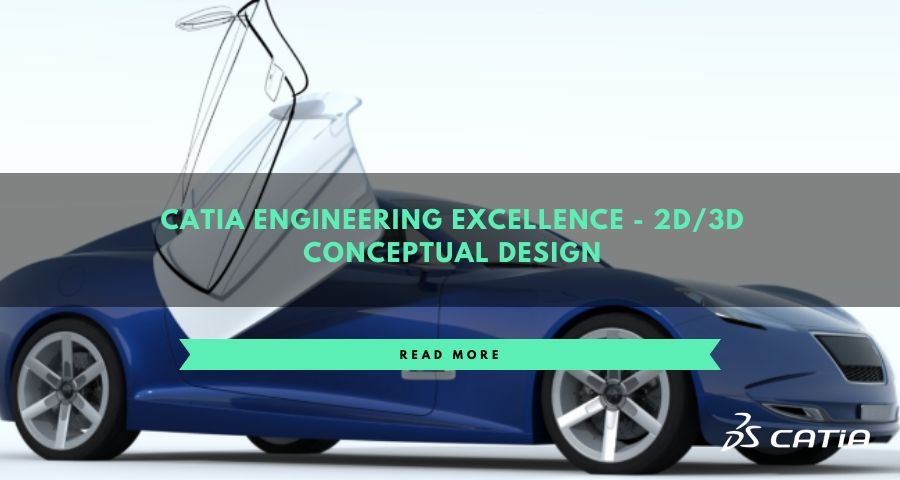
A WINNING COMBINATION
When effective collaboration intersects with world-class engineering, it’s a winning combination that empowers the existing CATIA user experience all the way down to manufacturing. Benefit from an extended set of applications for the creation and management of sophisticated mechanical projects including part design, sheet metal, tooling, assembly design, functional tolerances and annotations, kinematics and fitting simulation, DMU review, advanced surface design and more.
The offer brings together a large set of CATIA V5 applications, empowered by the 3DEXPERIENCE platform, allowing strong collaboration capabilities alongside strong CAD management capabilities.
CATIA Engineering Excellence contains three packages to get you ready for 3DEXPERIENCE CATIA.
CATIA ENGINEERING EXCELLENCE
An entry-level package to perform basic 3D Modeling and assemblies with a unique 2D/3D approach for conceptual design.
CATIA MECHANICAL ENGINEER EXCELLENCE
A powerful set of applications built to allow the creation and management of projects and parts, with one single full 3D product definition.
A sophisticated and advanced mechanical & shape design package complementing the product definition & the high-quality surface operation process.
HIGHLIGHTS
This is an opportunity to acquire an extended pack of specialized applications which will allow you to:
- Drastically reduce lead-time: Reduce design time with true concurrent engineering on complex parts and assemblies. Check the validity and improve the geometry of your objects thanks to “Healing Assistant”. Take the manufacturing process and associated constraints into account in all phases of design with process-oriented features such as sheet metal and functional molded parts.
- Up-to-date and complete information, directly in 3D: Take the manufacturing process and associated constraints into account in all phases of design with process-oriented features such as sheet metal and functional molded parts.
- Reuse and improve existing components: With a rich variety of standard, user-defined templates, components, and manufacturing information, the engineer is able to design faster than ever.
- Improve the design quality of your product: Create high-quality & complex mechanical shapes with a robust feature-based approach. Simplify, accelerate and check surface designs, increasing efficiency on tedious or repetitive manual tasks.
- Compensate manufacturing deformation: Achieve real productivity gains by comparing and optimizing nominal shapes with predicted or real shapes while preserving surface quality.
- Validate your design: Digital prototyping combined with Digital Mockup verification, allows product development teams to virtually create and analyze a mechanical product in its operating environment. Detect in one shot and automatically update all associated drawings.
- Collaborate and manage your data: Collaborate with all the stakeholders of your project on the 3DEXPERIENCE platform. Manage your native CATIA V5 data on the 3DEXPERIENCE platform without migrating data. Supplement your V5 capabilities by adding a 3DEXPERIENCE CATIA Role on top of your existing assets.
Conclusion:
CATIA is one of the core solutions delivered by Dassault Systemes. It delivers the Designing, Engineering, Systems Engineering and Construction applications for Systems architects, engineers, designers, construction professionals, and all contributors to define and shape in 2D/3D Conceptual design in the realtime world.
Want to discover more? Visit https://www.3ds.com/customer-transformation/catia-engineering-excellence.html
For inquiries and pieces of information comment below.
AutoCAD Vs AutoCAD LT 2020 – Discover which one is right for your design workflow.
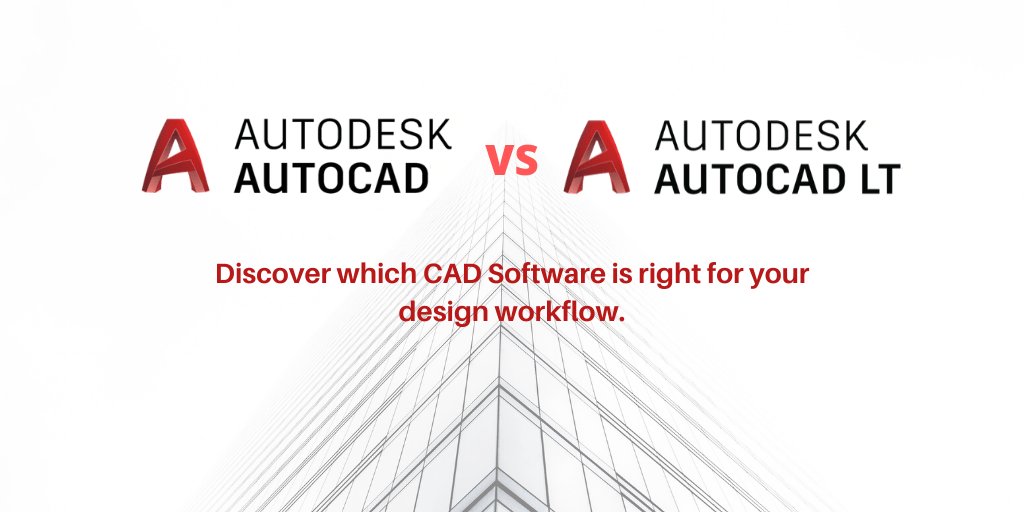
The most simple way to describe the difference between AutoCAD vs AutoCAD LT 2020 version is AutoCAD ensures 3D capabilities whereas AutoCAD LT is only capable of 2D Designing with limited offerings that mean cheaper in price.
Here we are going to compare AutoCAD vs AutoCAD LT 2020 version for your better understanding and discover which one is right for you.
AutoCAD 2020
The AutoCAD is mainly focused on the bigger construction companies with many employees and technicians. Which includes features like specialized tools sets for Architecture, Electrical, Mechanical design, 3D mapping, and more than 750,000 objects and parts with the new industry libraries.
Enables:
- 2D drafting, drawings, and documentation
- Customization of your software
- 3D modeling and visualization
- Working from anywhere with the included AutoCAD web and mobile apps
Things you can do with AutoCAD:
- Create and edit 2D geometry
- Annotate drawings with text, dimensions, leaders, & tables
- Customize the ribbon and tool palettes
- Attach and import data from PDF files
- Share and use data from DGN files, Navisworks, & Bing Maps
- Create and edit 3D models with solids, surfaces, & mesh objects
- Customize with add-on apps and APIs
- Extract object data to tables
- Create renderings with lighting, materials, & visual styles
- Apply and monitor CAD standards
Specialized Toolset:
- Speed up your work with specialized toolsets for Architecture,
- Mechanical, Electrical, MEP, Plant 3D, Map 3D, and Raster Design.
- Each toolset gives you industry-specific capabilities:
- Access libraries of 750,000+ symbols, parts, & detail components
- Automate the creation of floor plans, sections, elevations, annotations, layers, & properties
- Easily create details and views from 3D models, and simply generate schedules, lists, & tables
- Create rules-driven workflows to enforce design standards

Includes:
- AutoCAD mobile app
- AutoCAD web app
- Access to the Autodesk App Store
AutoCAD LT 2020
AutoCAD LT is the lightest and cheapest version of AutoCAD with faster, easy – to – use drafting tools. Essentially AutoCAD LT is AutoCAD minus some features. The product is mainly aiming for customers in the lower price range comes with the only single-user option aiming for smaller construction companies and for individual designing purpose.
Enables:
- 2D drafting, drawings, and documentation
- Working from anywhere with the included AutoCAD web and mobile apps
- Access a comprehensive set of editing, design and annotation tools
- Work quickly in an intuitive user interface
Things you can do with AutoCAD LT:
- Create and edit 2D geometry
- Annotate drawings with text, dimensions, leaders, & tables
- Customize the ribbon and tool palettes
- Attach and import data from PDF files
- Share and use data from DGN files & Bing Maps
Specialized Toolsets
Not included
Includes:
- AutoCAD mobile app
- AutoCAD web app
Conclusion:
AutoCAD comes with single-user and Multi-user (network) for Companies to choose and AutoCAD LT is only coming with a single-user option and LT is limited with features compared to AutoCAD at a lesser price. Now it’s time for you to decide which one best suited for your business.
What does DRAFTSIGHT Offer for you?
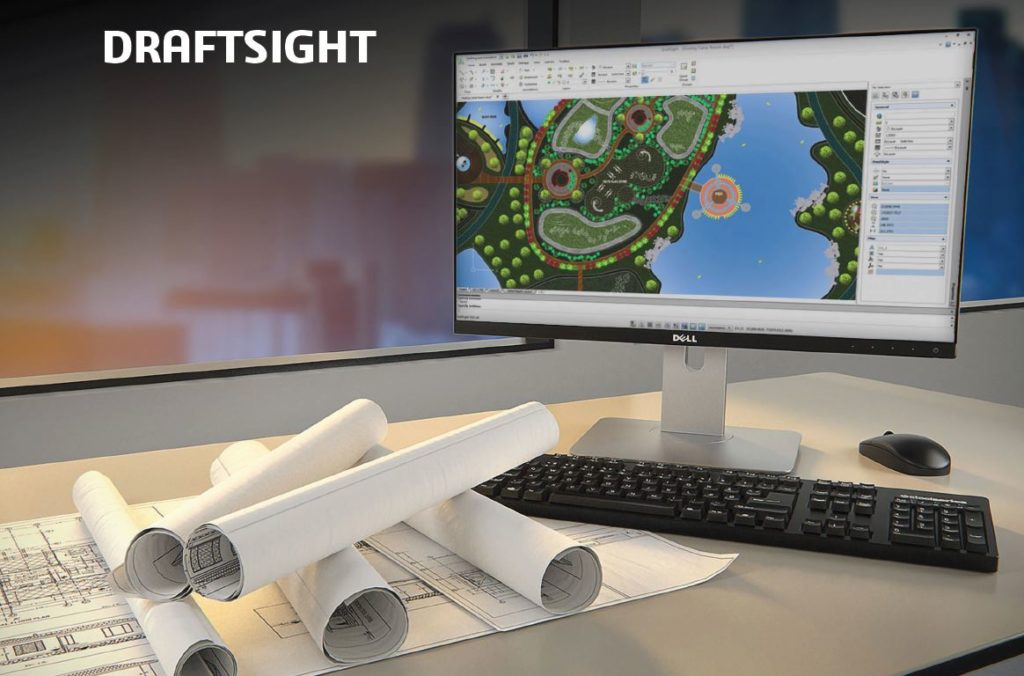
FREEDOM TO DO MORE WITH BETTER 2D DRAFTING AND 3D DESIGN EXPERIENCE
DraftSight is an intuitive 2D drafting and 3D design software for architects, engineers, construction service providers, professional CAD users, designers, makers, manufacturers, educators, and hobbyists. DraftSight enables you to create, edit, view, and mark up any kind of DWG file. Like any other CAD software out there It offers a familiar user interface that facilitates a quick transition from comparable CAD applications. let’s get deeper
BENEFITS
- You can create, edit, view, and mark up any type of 2D and 3D DWG file
- Choose from flexible offerings to suit various business and budget needs
- Reduce time spent on drafting, design, and documentation with powerful capabilities
- Make significant savings over comparable CAD applications
- Connect with other Dassault Systèmes solutions, like 3DEXPERIENCE Marketplace, GEOVIA, DELMIA, SOLIDWORKS Electrical, SOLIDWORKS PDM, and more, for CNC machining, 3D printing, manufacturing, and other downstream uses
- Experience reliable DWG file compatibility for current or legacy projects
- Minimize the learning curve with a familiar user interface and commands
- Customize and automate using macros and APIs, and easily transition existing workflows from other applications
- Easily deploy and manage network licensing and access full technical support to maximize production
CAPABILITIES
Essential 2D drafting
- Draw fundamental elements such as lines, polylines, arcs, circles, ellipses, tables, hatches, clouds
- Perform move, copy, rotate, mirror, pattern, scale, trim, chamfer, or split actions with modify tools
- Measure and annotate distances between objects with dimension tools
- Import, create and manage layers, blocks, and external references, and output drawings to a plotter, printer, or file
Advanced 2D drafting and APIs for customization
- Speed up your production workflows by using APIs for automation and customization
- Save countless hours of design time by eliminating manual or tedious tasks with tools like Drawing Compare, Power Trim, Insert Centerlines, Pattern Along a Path, Curved Text, Batch Printing, and more
- Convert raster images like floor plans and logos to vectorized line entities in seconds with Image Tracer
- Easily insert standard hardware from a fully defined library of bolts, screws, nuts, washers, and pins, generate holes and callouts, create a bill of materials, add balloons, and more with the Toolbox
- Import or export various file types and formats including PDF, DGN, SVG, XLS, and DSHBM (HomeByMe)
Robust 3D design and powerful integrations
- Create anything from essential 3D shapes to sketch-based complex 3D solids, and generate 3D surfaces
- Expand your design workflows through seamless integration with SOLIDWORKS Visualize for rendering and SOLIDWORKS Simulation for analysis. Use 3DEXPERIENCE Marketplace Make to connect with manufacturers worldwide for 3D printing or other processes.
- Control drawing entities parametrically by specifying geometric and dimensional properties with 2D constraints
DraftSight Support for many users and multiple sites
- Enable concurrent usage and compliance across your organization with network licensing
- Access full technical support to resolve issues and eliminate downtime
Conclusion
Finally, it’s up to you to choose upon your requirements and what’s your main concern about CAD (Computer-Aided) software.
Is it the Price? or is it the Software? Get opinion from our experts. Comment all your queries and concerns.
Find out more about DraftSight at https://www.draftsight.com



